The Kangaroo Fern – Microsorum diversifolium – is a uniquely shaped fern that’s fittingly native to Australia.
Despite its Ozzie origins, the name actually comes from its kangaroo paw-shaped leaves. In its juvenile form, the fronds tend to vary in shape and size, but most pinnae grow to be forked like a Kangaroo toe.
For all its weird names, the Kangaroo Fern is a stunning emerald green plant with a characteristic glossy look and leathery texture.
With such beautiful foliage, you’d be forgiven for thinking it would be as high-maintenance as they come, but it’s fairly forgiving as long as you take care of a few key needs.
So let’s hop to it!

Where to Buy Microsorum diversifolium
See the links below to purchase from reputable terrarium plant shops and marketplaces (may include affiliate links).
Kangaroo Fern Care Essentials
| Plant Type | Fern |
| Lighting | Bright, indirect light |
| Temperature | 65-80°F (18-27°C) |
| Watering | Regular, even moisture |
| Humidity | High humidity (60-90%) |
| Growth | Up to 1ft+ |
Lighting
Like many tropical ferns, the Kangaroo Fern is a natural epiphyte in its native environment.
But unlike many epiphytic ferns, Microsorum diversifolium doesn’t stay tucked away in a shady tree nook. It covers the host tree along a creeping rhizome, more like a vine, where it would be subject to a range of light situations.
So, as you’d expect, it’s quite a bit more tolerant of both lower and brighter light conditions than most other terrarium ferns.
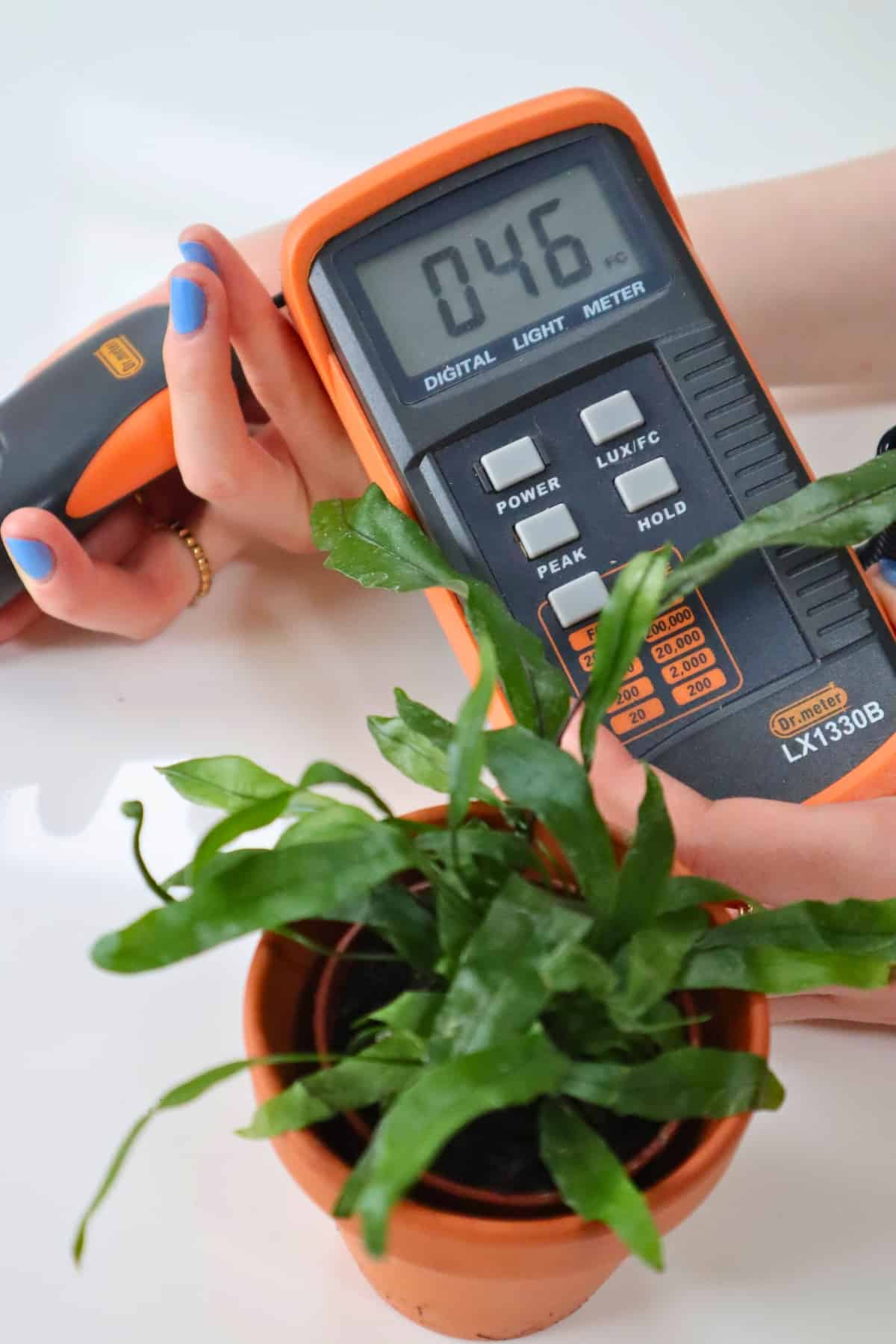
Though, it’s always best practice to strive for bright, indirect sunlight.
And, while an hour here or there won’t hurt, I’d recommend keeping it out of direct sunlight.
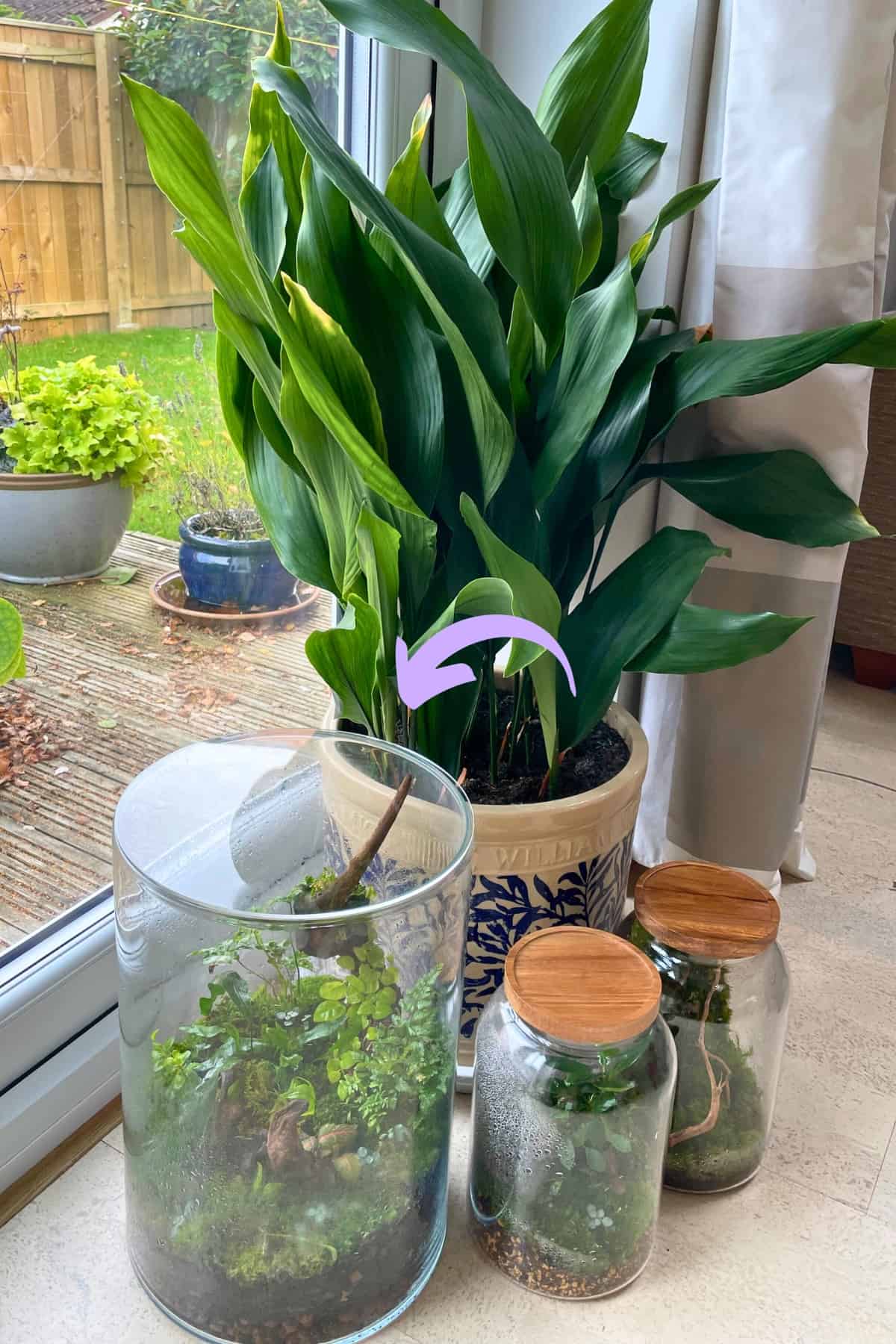
You might find that the light situation is closely tied to the growth rate. If you find yours is growing too slowly, move it to a brighter spot, and vice versa.
How to Water
For a tropical fern, Microsorum diversifolium is not all that demanding for water.
In the wild, epiphytes go through a soak-dry cycle, where the tree would be fully drenched in rainstorms and then dry out in between.
So, while it enjoys regular moisture, it will do just fine if left to dry out a little between watering.
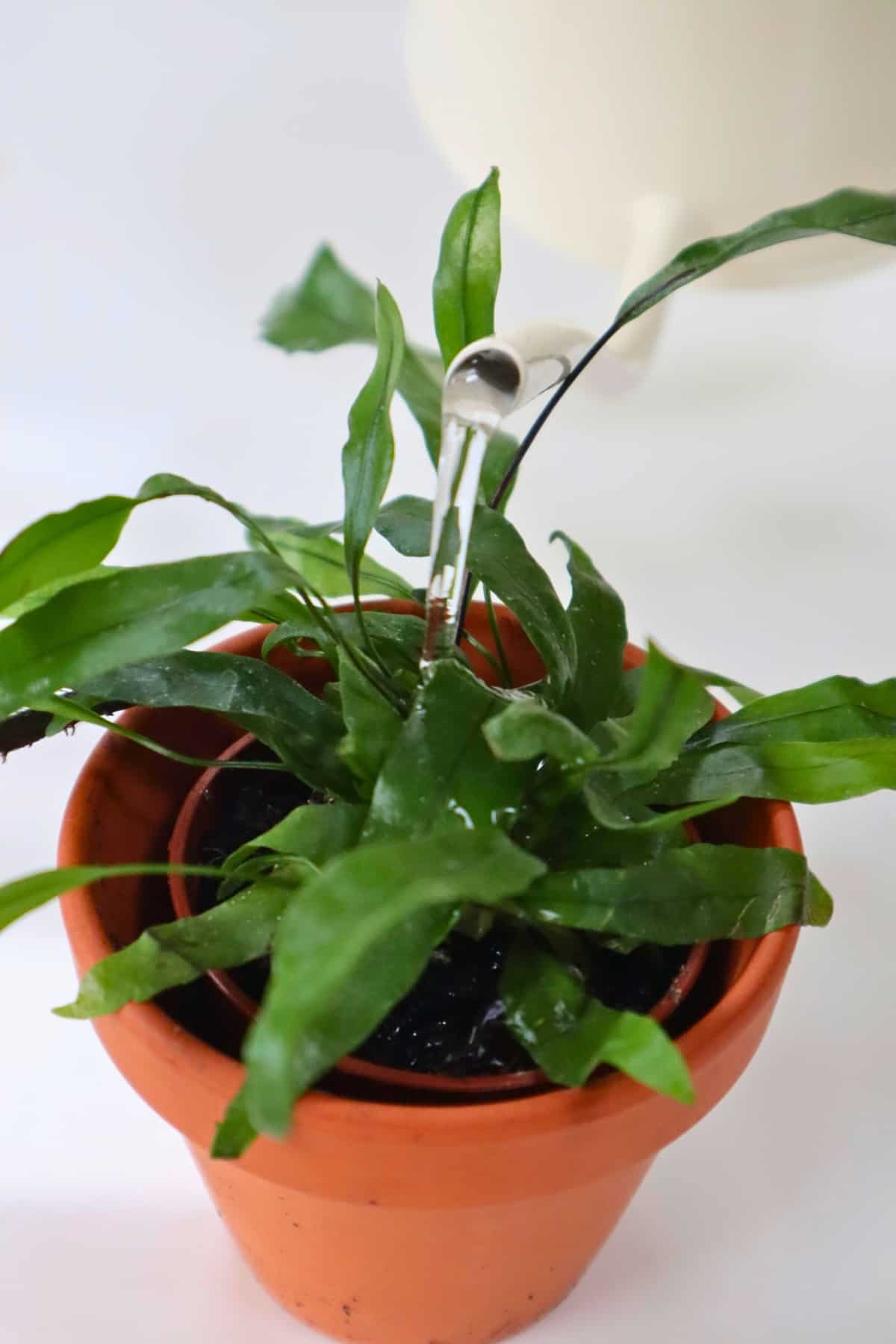
What’s far more important is that you provide adequate drainage via a pot with holes or a drainage layer in a terrarium.
Soil choice is crucial too, which leads us to…
Best Substrate/Soil
The Kangaroo Fern will grow best in a tropical substrate that retains moisture but also drains well.
It’ll take the finest, chunkiest mix you have, please!
I used a substrate mix with coco coir, orchid bark, charcoal, and earthworm castings (which serve as a slow-release organic fertilizer).
Temperature & Humidity Needs
Just like me, Kangaroo Ferns like it hot and humid at all times.
The more you can match those native tropical conditions, the happier it will be. So stick the heating on!
I recommend never letting your home drop below 60°F and 50%.
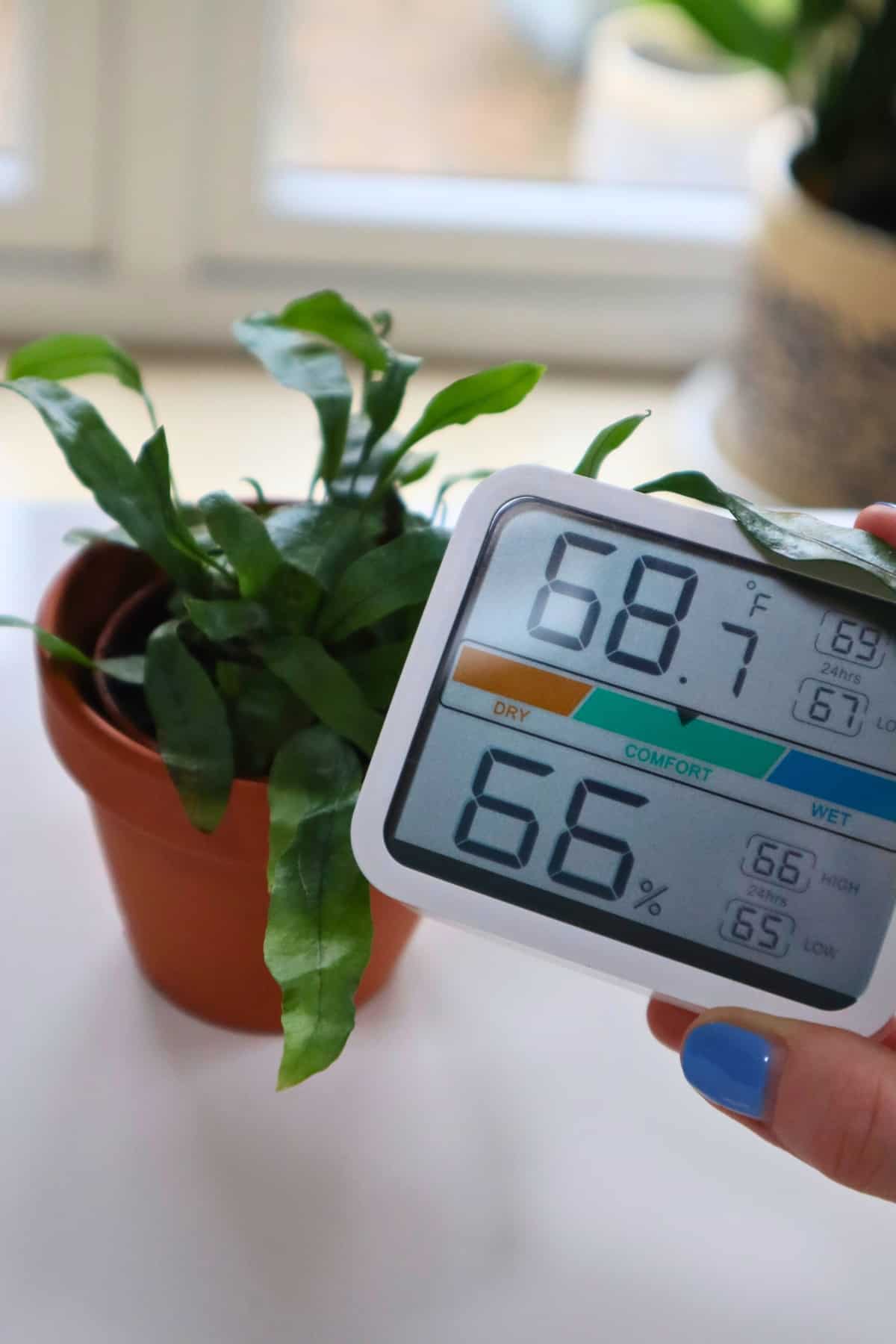
In fact, as per their natural Australian environment, humidity is the most important factor in caring for this plant.
So, naturally, a closed terrarium is a great way to keep your Microsorum diversifolium happy and healthy.
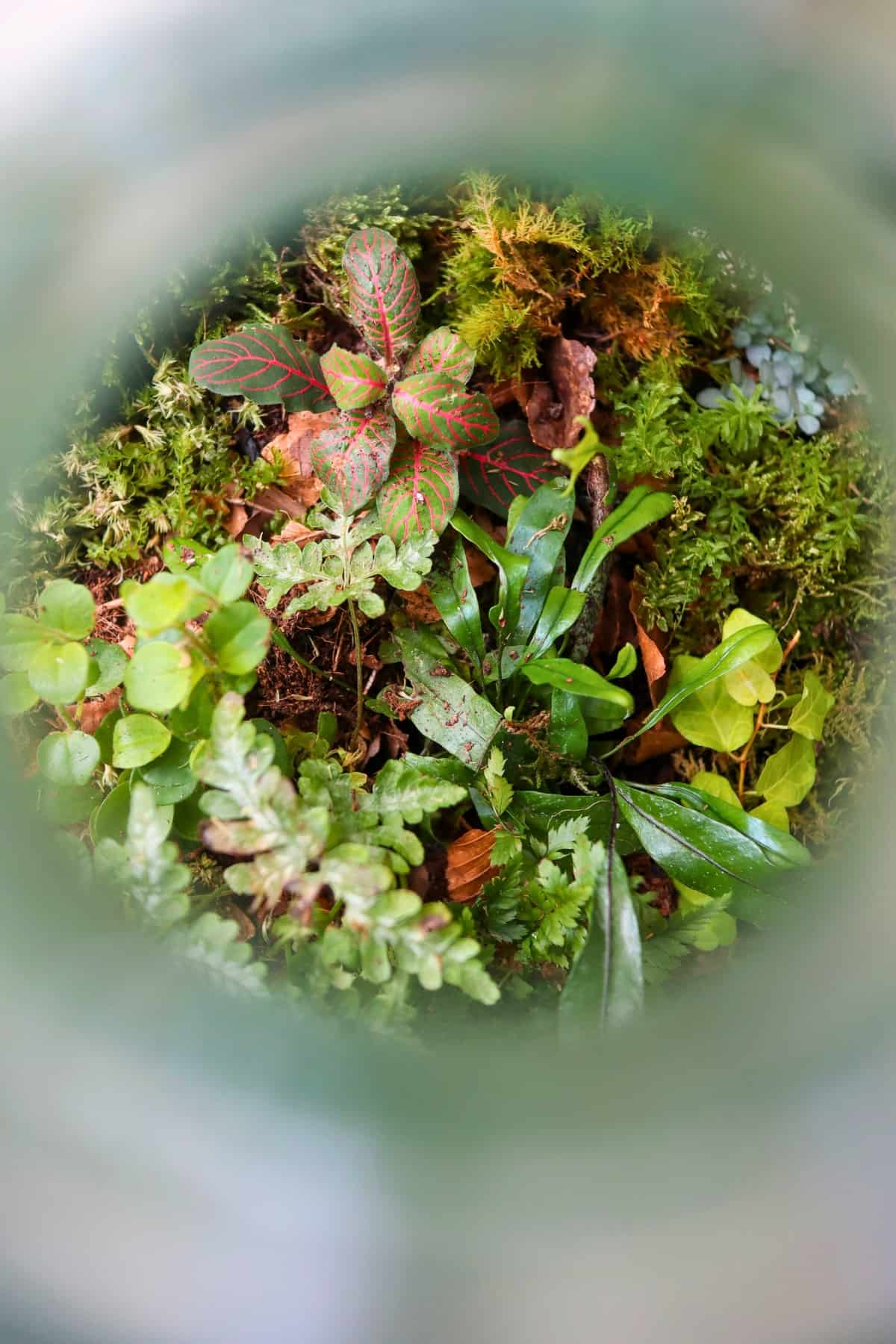
Growth
The Kangaroo Fern grows lush, thick leaves on thin stalks.
It has quite the irregular growth pattern and can take a while to develop into its mature (kangaroo-like) form.
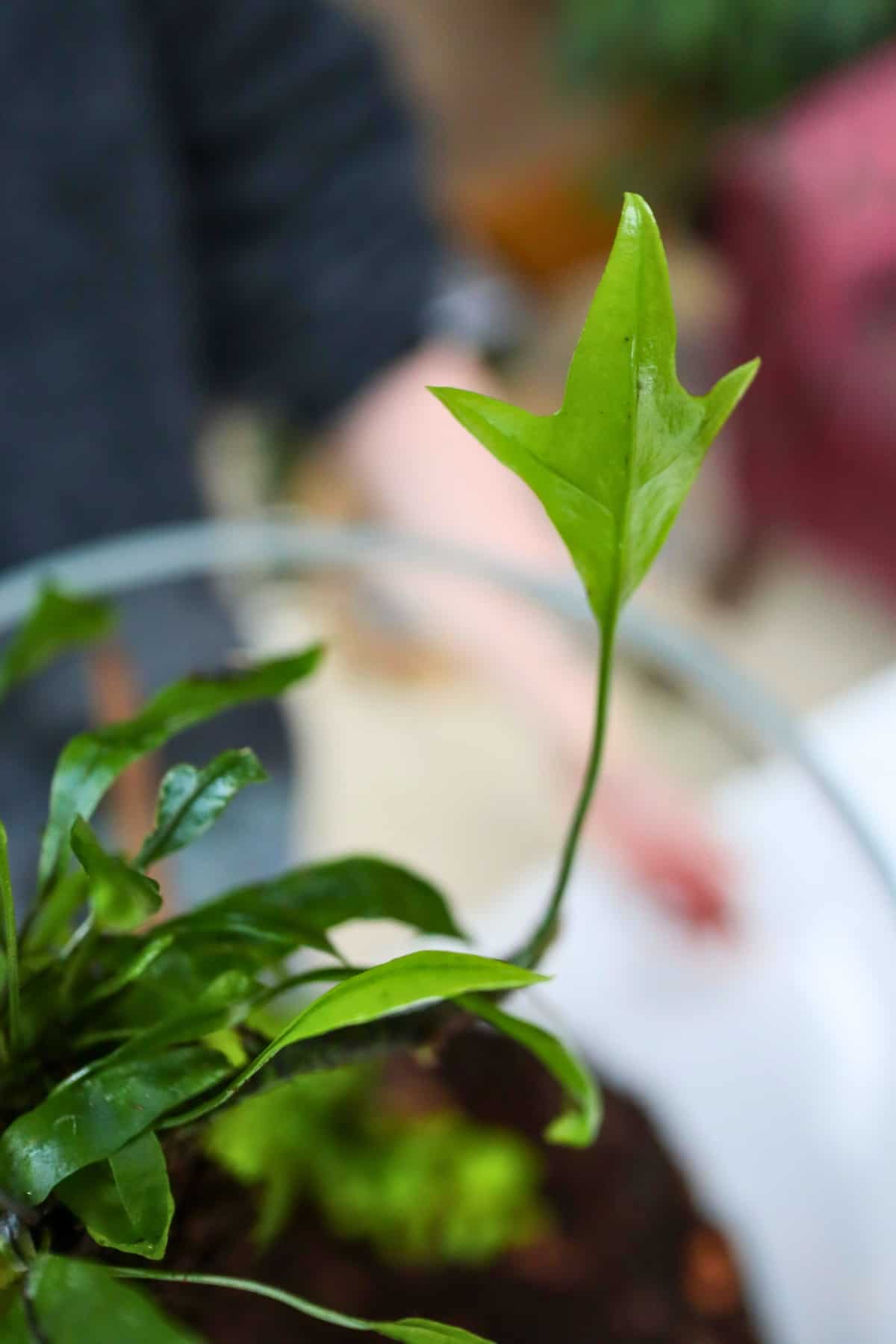
To best display its wild, serpentine growth, make sure it has enough room to spread out properly. I find it works best in larger terrarium environments, but it’s easily trimmed if you’re prepared to maintain it in a smaller project.
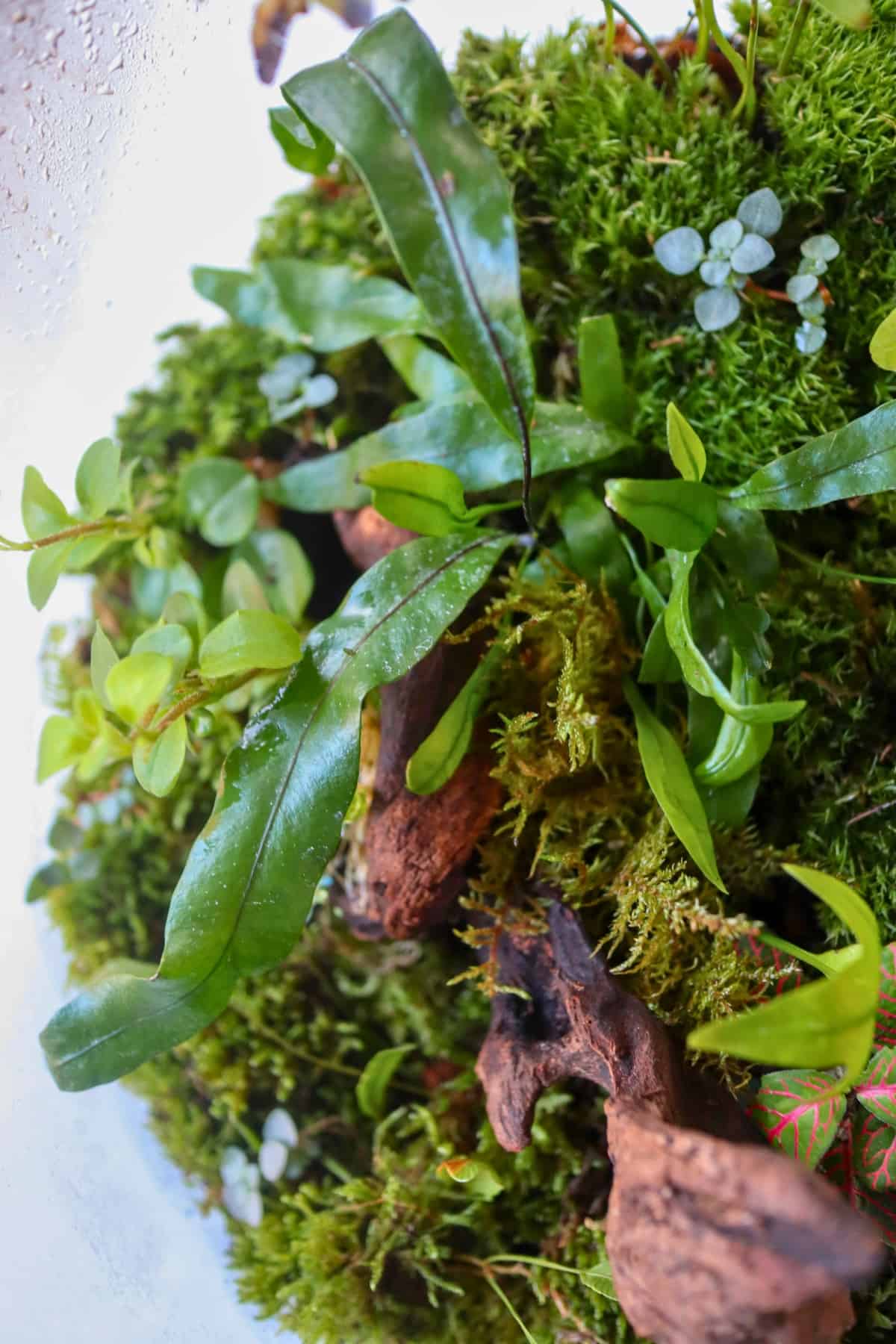
Because it grows along a creeping rhizome, it’s more likely to fill out horizontally rather than grow too tall. If you’re lucky, you might even see it epiphytically attach itself to a hardscape piece.
As a houseplant, expect it to get nice and bushy as time goes on.
How to Propagate the Kangaroo Fern
The Kangaroo Fern propagates via (pretty huge) spores in the wild. But in the home, it’s a great candidate for propagating via division.
You’ll need to separate the plant into two or more sections – scissors will come in handy for cutting through that tough rhizome.
Make sure each piece has some root, rhizome, and fronds, and it should be viable.
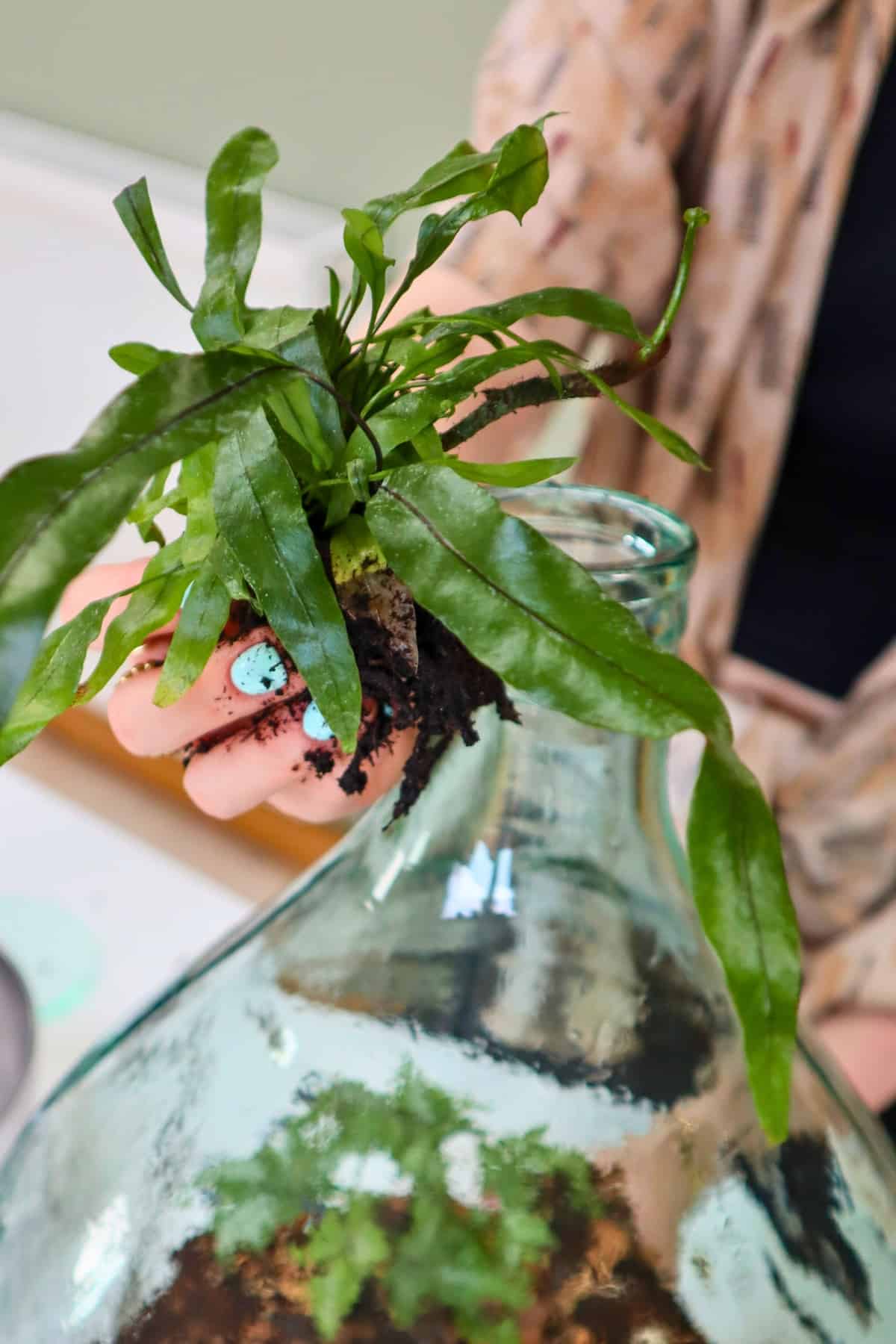
Another method is to take a rhizome cutting without roots and pin it down into the soil to root up, but I’m fairly certain the success rate would be significantly lower.
Varieties & Similar Plants
Just to make things confusing, there are not one, but two Kangaroo Ferns, the other being Microsorum pustulatum.
It’s much bigger, more uniform, has broader foliage, and is generally a lot less common.
There are plenty of other notable species in the Microsorum genus too, including a few animal-themed ferns.
Why not try the Crocodile Fern (Microsorum musifolium), or the Fishtail Fern (Microsorum punctatum)?
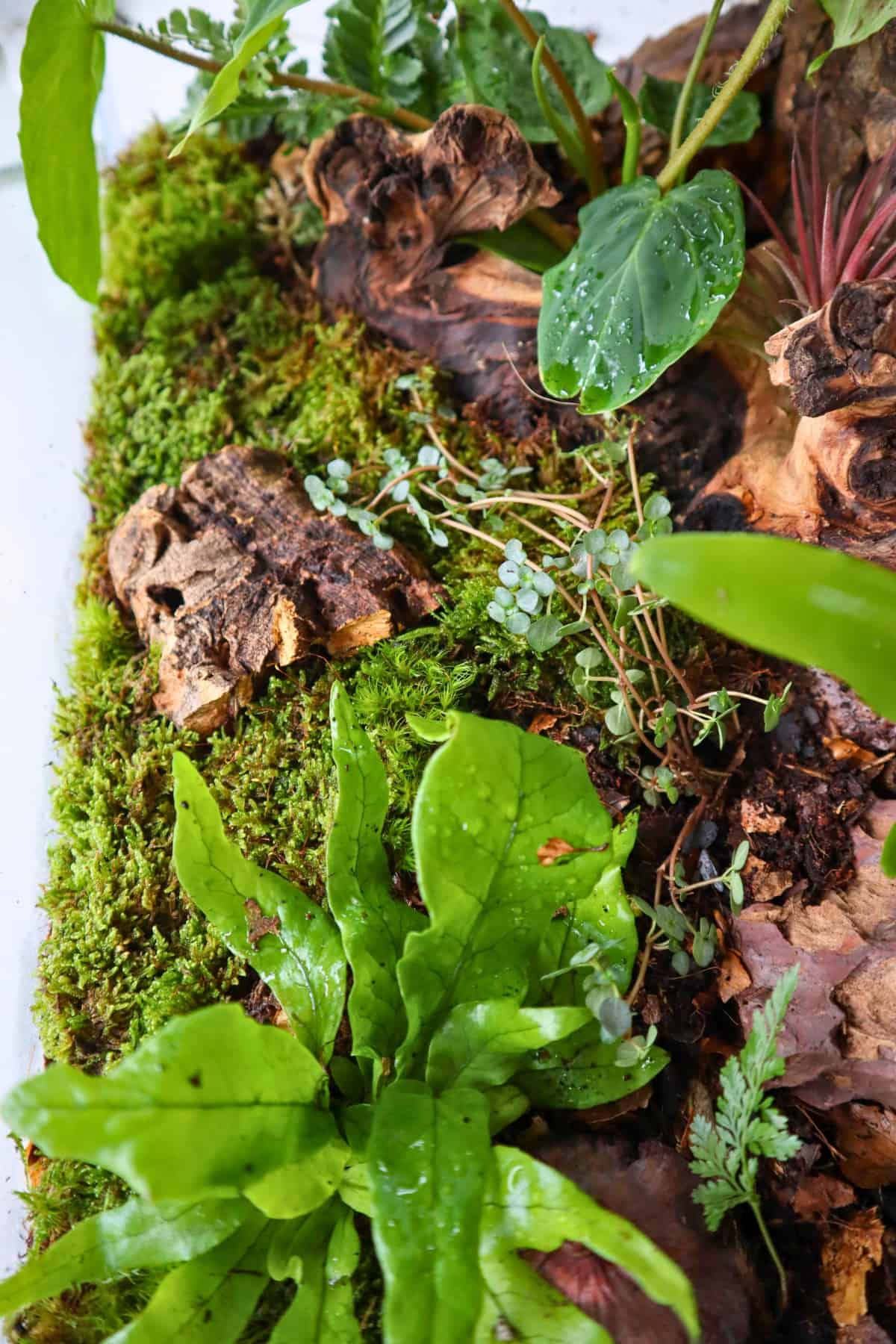
Or if you’re looking for something really exciting, the literally blue Blue Oil Fern (Microsorum thailandicum) might be what you’re looking for.
